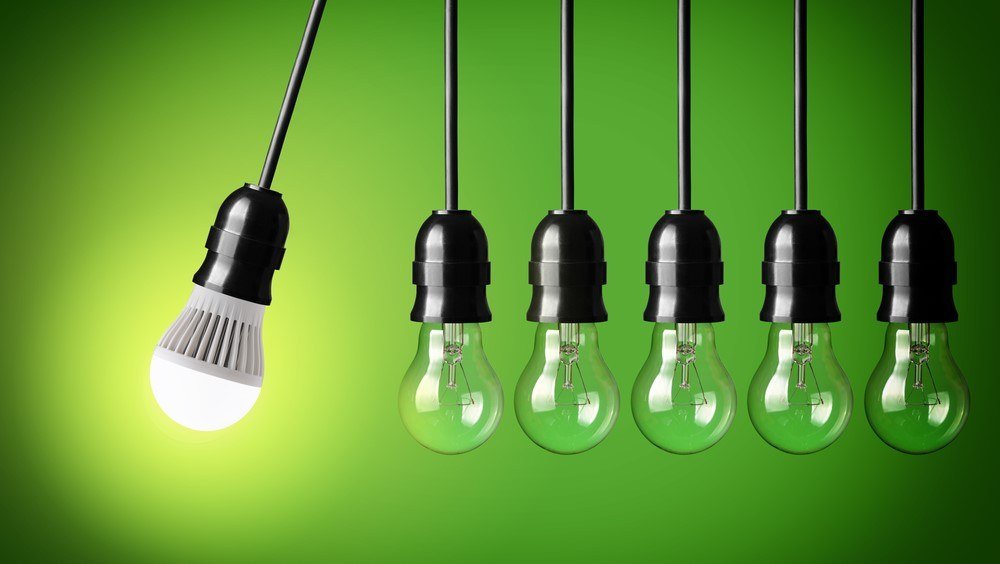With the ever-increasing push for sustainability in as many aspects as possible of our home and working lives, people have been looking for ways to make a positive impact on the environment around their homes.
One of the most noticeable elements in this endeavor is the lighting used inside the house. The shortcomings of traditional incandescent bulbs have been known for a while now. Excess heat and a short lifespan are two of the most notable major flaws.
So what are the alternatives out there, and well how do they work?
LED light bulbs
Light emitting diodes, or LEDs, form the backbone of this lighting type. They work by running an electrical current through a semi-conductive material, which is illuminated by this. This is different to an incandescent bulb, which works by running current through a metal filament. This heats up the metal until it glows, producing light (and plenty of heat).
An LED light bulb will usually clock in between 3 and 10 watts. As a general rule of thumb,they’ll be about 10% of the wattage of the equivalent incandescent bulb. They offer between 50 000 and 100 000 hours depending on the brand. This roughly equates to a 28-year lifespan if used for 5 hours a day.
LED lighting has the main benefit of being far more energy efficient than the other lighting methods on the market, while also being brighter. Another important aspect is that, unlike incandescent bulbs, LED lights produce virtually zero heat (or UV emissions). They also work much better than other lighting methods in the cold, wintery months, a time when light is needed more due to the shorter days.
CFL light bulbs
A compact fluorescent bulb, or CFL, meanwhile, is another type of green lighting. These bulbs work by adapting the technology of a fluorescent tube and putting it in a lightbulb. A fluorescent bulb is the most complicated of the lighting options discussed. To put it briefly, electrons move through an inert gas (usually argon) along the tube, and this movement interacts with a small amount of mercury in there, resulting in invisible spectrum light being produced. This invisible light interacts with phosphor powder on the tube, which creates visible light.
While CFL bulbs cost more than traditional incandescent bulbs, their lifespan is 14 times longer and they are far greener. They do, however, still operate at a larger wattage than LED lights, ranging from 20 watts to 200. Because of this, they should be considered second best compared to LEDs.
Solar lights
More a subset of lighting than a type of bulb itself, solar lights nevertheless form a major part of sustainable lighting. As the name suggests, they are powered by sunlight, through a solar panel. This power is 100% renewable and comes at no extra cost to you after you’ve bought the light.
Solar lights are best suited to outdoor areas, where they can absorb maximum sunlight. They also are suited for this location because they don’t require any wiring through or on the ground to function.
What is there beyond just bulb type?
There is a little more to this discussion than just the type of light bulb used. There are other elements that affect the efficiency of the lighting in the area. Energy efficiency and sustainability are linked because until the power generation for your home is renewable, the amount of energy drawn from the lighting will have an environmental impact.
The main impact these elements will have is to reduce the amount of lighting required in an area, and while this will be more effective with less green lighting to go with it, it is still the optimal way to set up lighting regardless of the bulbs used.
Directional lighting
Certain light fixtures feature a reflective surface inside them to direct the light emitted in a certain direction. By focusing the lighting on a specific area, the light is concentrated in the area it’s needed and doesn’t bleed into other areas, which would waste excess light. This reduces the amount of lights needed to illuminate that specific area without sacrificing any of the luminosity.
Dimmers
A dimmer is a dial on the light switch that controls the intensity of the light bulb. This allows for the brightness to be adjusted as needed, something unable to be done with traditional incandescent bulbs.
By being able to adjust the amount of light in an area as needed, you can reduce your overall power usage, not only saving you money, but also reducing the amount of non-renewable energy used.
Wall colour
The paint or wallpaper on a wall will affect the efficiency of the lighting in the room. Darker colours will absorb more light, and lighter colours will reflect more light. Having lighter coloured walls will therefore reduce the amount of light needed to illuminate a room. This goes particularly well with a lower watt bulb or a dimmer, to best reduce the amount of power needed to light the room. It also works well with the natural light, keeping the room light for longer without using the electrical lights.
Installing sustainable lighting
Sustainable lighting doesn’t provide any greater challenge to install than less green kinds, with most new light bulbs being designed to be compatible with the existing sockets. Electrical work can definitely be dangerous however, so when it comes to any electrical work, have a qualified Perth electrician undertake your Perth LED lighting installation. You can also speak to them for more personalised ways to be greener with your lighting.


 Seven Plus-Size Date Night Dresses to Feel Confident In
Seven Plus-Size Date Night Dresses to Feel Confident In 